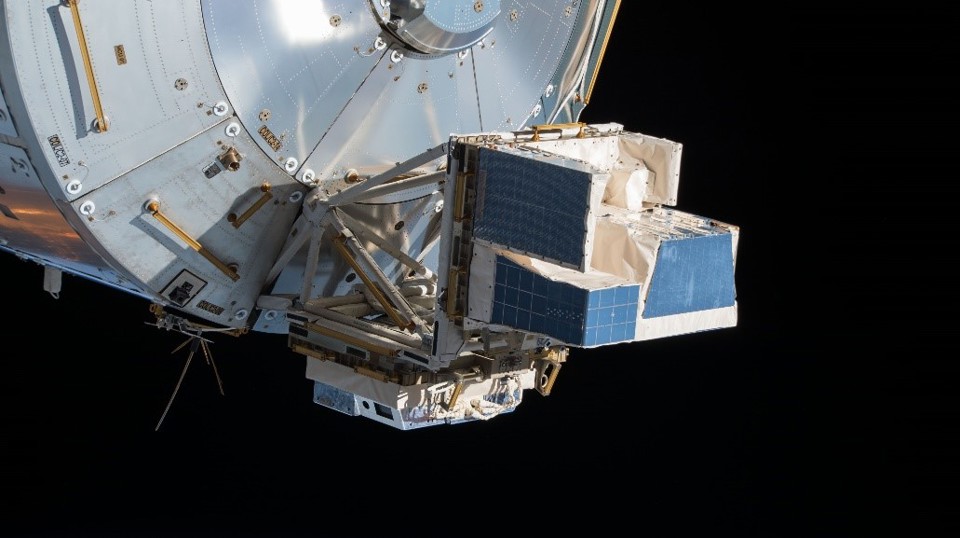2020-06-18
ASIM EXTENDS MISSION AND ENTERS THIRD YEAR OF OPERATIONS
The Atmosphere-Space Interactions Monitor started nominal operations in June 2018, studying thunderstorms above Earth.

The Atmosphere-Space Interactions Monitor, or ASIM, mounted outside the European Columbus laboratory of the International Space Station, enters its third year of science operations.
Originally designed for a two-year mission, ASIM was developed by Terma for ESA for the ASIM Science Team, coordinated by the Technical University of Denmark, and is operated from the Belgian User Support and Operations Centre.
In 2019 Terma provided an assessment of the possible life-time extension of ASIM.
Dan D. V. Bhanderi, ASIM Engineering Manager, says that the assessment has cleared the way for in-orbit operations until 2025 from a technical point of view.
ASIM was launched in April 2018 and started nominal operations on 13 June 2018 and has been studying thunderstorms 400 km above Earth ever since.
Transient Luminous Events
Specifically, ASIM is on the hunt for elusive electrical discharges in the upper atmosphere, or ‘Transient Luminous Events’, that extends upwards into space. These discharges have alluring names like red sprites, blue jets and elves and have been reported by pilots over the years. Besides these phenomena ASIM is also studying terrestrial gamma-ray flashes. These are high-energy discharges of photons that propagate out into space.
All these light shows appear to be more common than originally thought and scientists are eager to know more about how they could influence Earth’s climate.

Image courtesy ESA & DTU Space
ASIM was acknowledged in NASA’s Space to Ground weekly update on Space Station activities in June 2020 and in this article on nasa.gov featuring ASIM Principal Investigator, Torsten Neubert from DTU Space.
Technical outfit
ASIM is outfitted with a collection of optical cameras, photometers and an X- and gamma-ray detector designed to track and record the transient luminous events and terrestrial gamma-ray flashes.

Scientists knew these terrestrial gamma-ray flashes existed because they were detected by astronomy spacecraft in the 1990s, but the ‘MXGS’ instrument on ASIM is looking down at Earth from the International Space Station and scans the globe to pinpoint the source of the gamma-rays. Results from the investigations made the front page of Science in January 2020.
A tremendous success
As ASIM can better detect terrestrial gamma-ray flashes it is revealing more details than ever before, as well as showing where they originate. Scientists can then pool data from other spacecraft and ground-based weather stations to complete the overview.
According to Ole Hartnack, ASIM Project Manager at Terma, ASIM has been a tremendous success and Terma is delighted that ASIM is producing great science.
In addition to terrestrial gamma rays, ASIM is also catching glimpses of other types of events from its vantage point on the International Space Station. For instance, the payload has clocked meteorites.

Who we are
Terma in Brief
The Denmark based high-tech Terma Group develops products and systems for defense and non-defense security applications; including command and control systems, radar systems, self-protection systems for aircraft, space technology, and aerostructures for the aircraft industry.
Learn more about us



